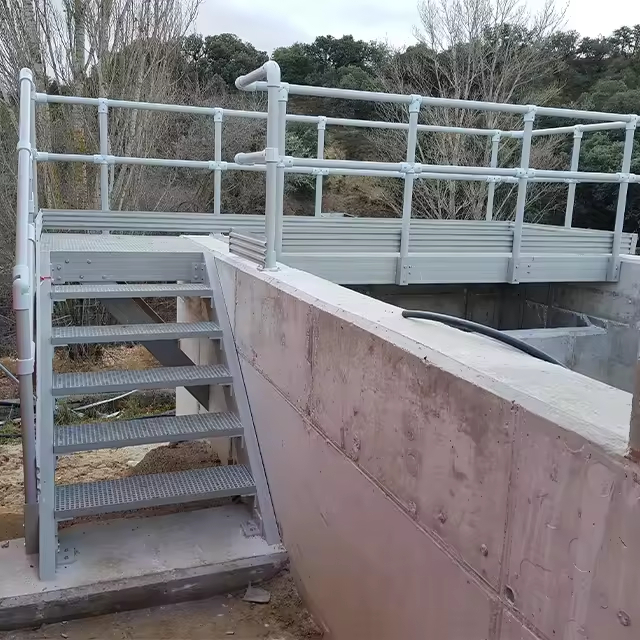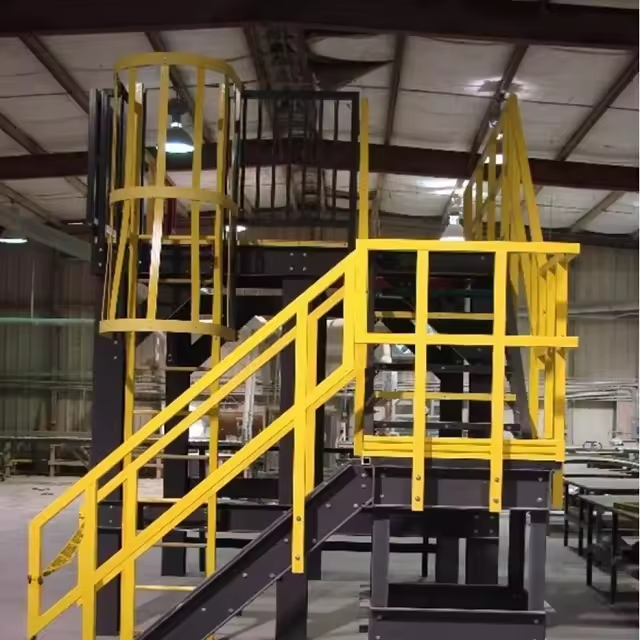Tags
- Home
- »
- Fibergrating's Blog
- »
- Sustainable Solutions for the Future from FRP HandrailS Factory
Lorem ipsum dolor sit amet, consectetur adipiscing elit. Ut elit tellus, luctus nec ullamcorper mattis, pulvinar dapibus leo.
Table of Contents
Introduction of FRP Handrails Environmental Effection
In today’s world, where environmental concerns are at the forefront of our minds, it’s essential to consider the impact of our choices on the planet. One area where this is particularly relevant is in the construction industry, where materials used for various purposes can have a significant environmental footprint. One such material is FRP handrails, which have been gaining popularity in recent years due to their durability, low maintenance requirements, and corrosion resistance. But how do these handrails stack up when it comes to their environmental impact? Let’s take a closer look at the sustainable solutions that FRP handrails offer for the future.
Composition and Durability of FRP Handrails
FRP handrails are made from fiberglass reinforced polymer, a composite material that combines the strength of fiberglass with the durability of polymer resins. This combination results in a lightweight yet strong material that can withstand harsh environments without corroding or degrading over time. As a result, FRP handrails can last significantly longer than traditional metal handrails, reducing the need for replacement and minimizing waste.

Production Process and Environmental Impact
The environmental impact of FRP handrail is further minimized by their production process. Unlike metal handrails, which require the extraction and processing of raw materials such as iron ore or aluminum, FRP handrails are produced using a combination of recycled materials and renewable resources. This means that the production of FRP handrails has a lower carbon footprint than that of traditional metal handrails, contributing to a more sustainable future.
Recyclability of Fiberglass
FRP handrails are often designed to be easily recyclable at the end of their lifespan. When a handrail is no longer needed, it can be broken down and repurposed into new materials, reducing the amount of waste that ends up in landfills. In contrast, metal handrails can be more difficult to recycle due to their complex composition and the energy-intensive process required to separate the different materials.
Safety and Accessibility
In addition to their environmental benefits, FRP handrails also offer several advantages in terms of safety and accessibility. Their non-conductive nature means that they are less likely to cause electrical hazards in wet or damp environments, making them a safer choice for use in areas such as swimming pools or near water features. Additionally, FRP handrails can be designed with a variety of grip textures and colors, making them more accessible for individuals with visual or mobility impairments.
Future Implications
What does all of this mean for the future of FRP handrails and the construction industry as a whole? As awareness of environmental issues continues to grow, it’s likely that we will see an increasing demand for sustainable materials and practices in all aspects of construction. FRP handrails, with their long lifespan, low environmental impact, and safety features, are well-positioned to become a go-to choice for builders and architects looking to create more sustainable and accessible spaces.

Conclusion
The environmental impact of FRP handrails is a testament to the power of innovation and the potential for sustainable solutions in the construction industry. By choosing FRP handrails, we can help reduce our carbon footprint, minimize waste, and create safer, more accessible spaces for all. As we move forward into a more environmentally conscious future, it’s essential that we continue to seek out and adopt sustainable materials and practices, and FRP handrails are a prime example of how we can do just that.
